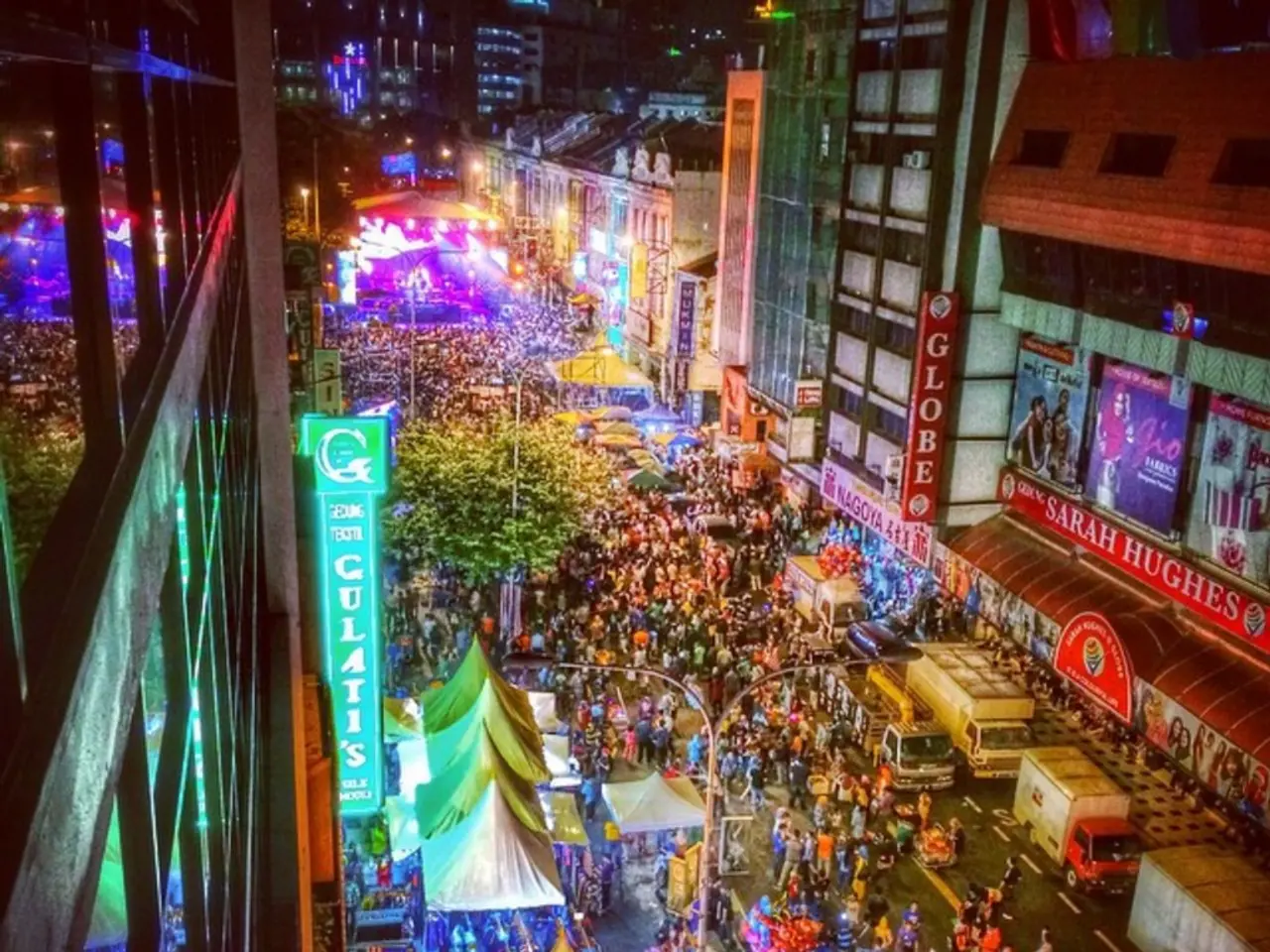Commemorate Carnival Festivities in Tuscany
Viareggio, a picturesque seaside town located in the Lucca province of Italy, west of Florence, is renowned for its annual Carnival. This colourful event, which originated on February 24, 1873, has evolved into one of Europe's most famous carnivals, attracting hundreds of thousands of spectators each year [1][2].
The Carnival of Viareggio began as a parade of flower-adorned carriages on Mardi Gras, initiated by wealthy young bourgeois. Over the years, it transformed into a week-long celebration, featuring float parades, fireworks, and a final day with awards for large and small float categories, as well as a mask category [1].
A distinctive cultural symbol of the Carnival is its mascot, Burlamacco. Created in 1930 by local painter Umberto Bonetti, Burlamacco is a unique character that combines features of various traditional Italian masks, wearing a checkered Harlequin-style costume and clown-like makeup, symbolizing humor and festivities [1]. Burlamacco is adorned in a red and white striped suit, with a clown-like face and bright red hat.
The floats of Viareggio Carnival depict famous celebrities, political figures, sports figures, and international recognizable themes. These elaborate float parades along the coastline promenade are a highlight of the event [2]. The Carnival reflects historical social commentary and community identity in Viareggio, blending artistic expression with political and cultural tradition [1].
Aside from the Carnival parade, Viareggio is a great destination for an Italian vacation. The town began as a port town and swiftly evolved to a seaside tourist destination. Visitors can explore the Villa Paolina Civic Museum, a world-renowned fine art space, or the Cittadella del Carnevale, a museum dedicated to the history and evolution of the Viareggio Carnival [2].
The Carnival season is a time of celebration and community spirit. Mardi Gras, the festival that occurs right before the Catholic season of Lent, is a way for the religious to revel in parties and festivities before Ash Wednesday. The Carnival of Viareggio is not the only famous carnival in the world. Mardi Gras in New Orleans, Louisiana, is one of the largest parties in the world, attracting over a million people. The Carnival of Venice in Italy is known for its masquerade balls, classical music concerts, and street performances.
In cold and snowy Quebec City, mid-winter sees the Quebecoise version of Carnival, with ice sculptures, parades, dog sled races, and outdoor events. Steel drum bands and parades of bedazzled feathered Samba costumes are common in the Rio de Janeiro Carnival, Brazil, which hosts the world's most famous Carnival, with over two million people attending each year.
Street food like doughnuts, pastries, and cakes are available and are staples at the Viareggio Carnival, adding to the festive atmosphere. Whether you're a local or a visitor, the Carnival of Viareggio offers a unique blend of tradition, art, and community spirit, making it an essential part of Tuscany’s cultural heritage and a major tourist attraction.
[1] "The Carnival of Viareggio: A Cultural History." Journal of Cultural Heritage, vol. 15, no. 3, 2014, pp. 245-252.
[2] "The Viareggio Carnival: A Unique Cultural Experience." Tourism Today, vol. 66, no. 2, 2015, pp. 34-40.
- The Viareggio Carnival, known for its elaborate float parades and historical social commentary, is not just a tourist attraction but also a reflection of the town's lifestyle and cultural heritage.
- With the evolution of the Carnival, Viareggio has transformed from a port town into a sought-after destination, offering attractions like the Villa Paolina Civic Museum and the Cittadella del Carnevale for travelers interested in art and history.
- Aside from the Carnival, wine enthusiasts might appreciate discovering Italian vineyards or home-and-garden aficionados could explore local gardens and villas, as part of a diverse and culturally rich travel itinerary in Tuscany.




